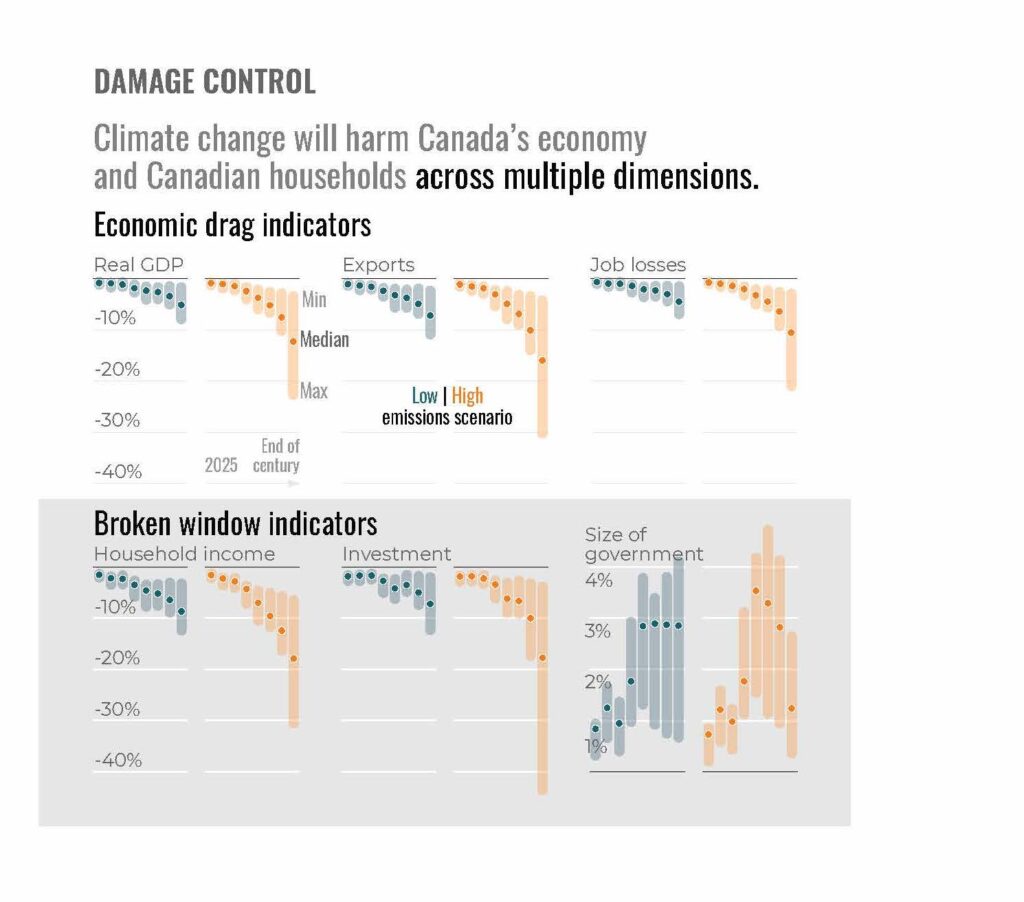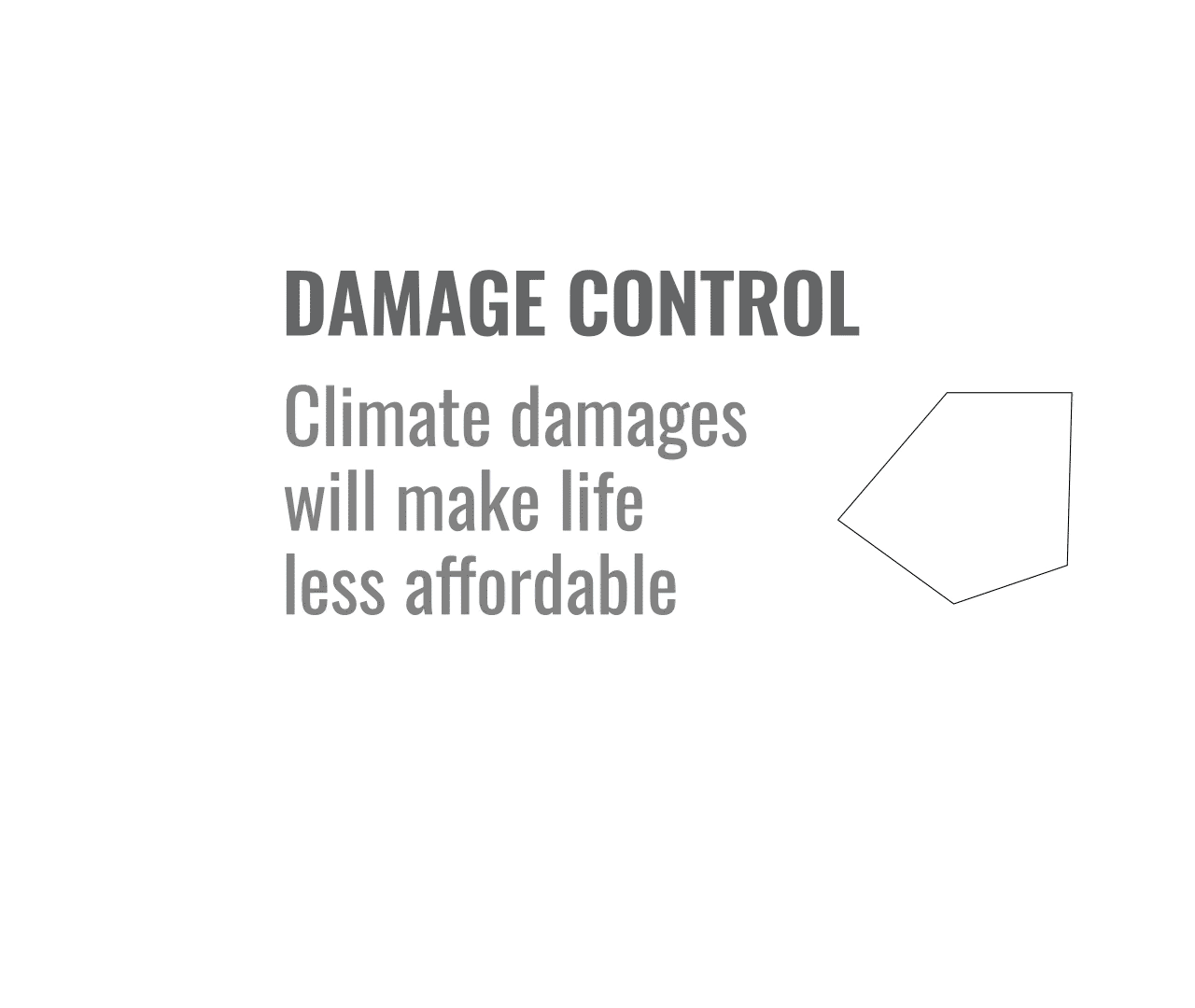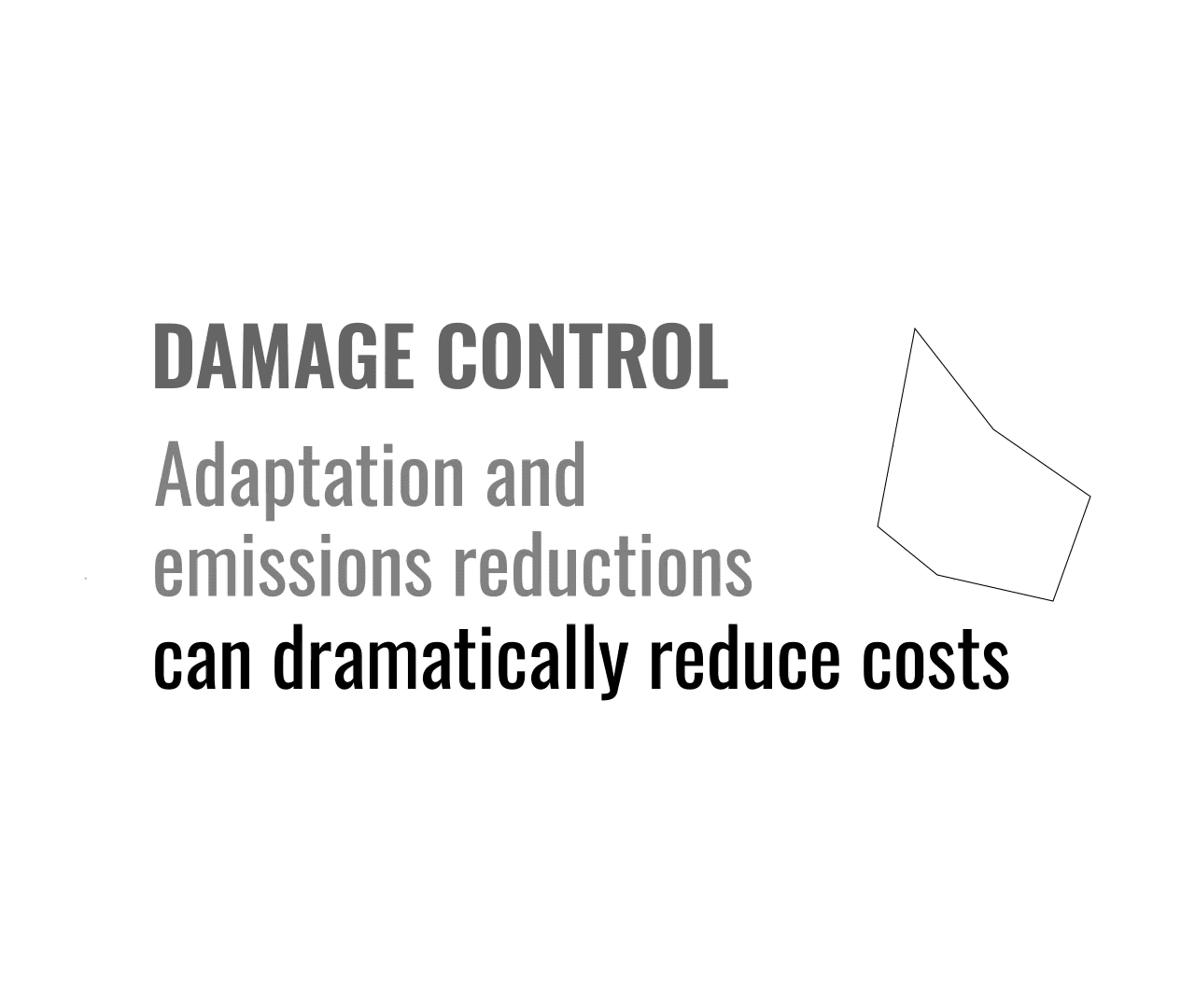Damage control
Reducing the costs of climate impacts in Canada
Climate change is dragging down Canada’s economy and making life less affordable.
The final report in our Costs of Climate Change series—Damage Control: Reducing the Costs of Climate Impacts in Canada—is the most comprehensive assessment to date of how the impacts of accelerating climate change are damaging Canada’s economy, and putting people’s lives, well-being, and prosperity at risk.
The report also shows that proactive adaptation measures and reducing emissions can cut those costs by three-quarters.
CLIMATE damages ARE AN ECONOMIC DRAG
Climate change will reduce economic growth at both the national and sector levels, straining government budgets, reducing household income, and eroding Canada’s competitiveness.
While the topline macroeconomic losses from climate impacts are concerning, actual costs for people in Canada are even more severe. These household impacts, obscured in the hit to national gross domestic product (GDP), are a classic case of the broken window fallacy, which describes the distorting effect of spending to repair destroyed assets. Such forced spending carries with it an opportunity cost, as expenditures are being directed towards fixing what has been broken, rather than towards new productive activities that create wealth.

CLIMATE DAMAGES HIT HOUSEHOLDS HARD
Climate impacts will place a major burden on households.
Our findings show that life will become less affordable for households as economic growth slows, governments are forced to raise taxes to pay for climate disasters, job losses increase, and goods become more costly because supply chains are disrupted.
GDP could fall by 12 per cent by the end of the century compared to a stable-climate scenario, but the outlook for households is even bleaker, with incomes potentially falling by 18 per cent.

Some of the costs households will pay, like the increased risk of premature death or illness and impacts on mental health, are not quantifiable, and therefore not included in our calculations. However, these below-the-waterline damages do exist and also need to be taken into account by governments.
Economic damages are already occurring. They will continue to worsen and will accelerate rapidly after mid-century, meaning that future generations will bear the higher costs. Across all high-emissions scenarios by 2095, income levels are down 18 per cent below a stable-climate case.
CLIMATE DAMAGES WORSEN INEQUALITY
All households will be worse off in both low- and high-emissions scenarios, with low-income households the most affected. The median income group will see a 19 per cent income loss by end of century in a high-emissions scenario, and the lowest-income households will see a 23 per cent loss.
The disproportionate losses for low-income households are driven by the loss of the same amount despite a lower total income. A higher proportion of income comes from low-income jobs in the service sector, which is heavily affected by damages to infrastructure and supply chain disruptions. Finally, the lower-income group tends to spend more of their income on transportation services and housing, both of which are highly sensitive to climate impacts.

WE CAN LIMIT THE DAMAGE
While climate damages are already costing Canada’s economy and making life less affordable, investing now in proactive adaptation measures can cut the costs of many climate damages in half in both low- and high-emissions scenarios. If global emissions reductions in line with a low-emissions scenario are achieved, the total costs could be cut by three-quarters.
Both adaptation policy to prepare for climate damages and mitigation policy to reduce emissions are crucial to limiting future costs and protecting households.
Taken together, a combination of proactive adaptation measures and global emissions reductions will be the most effective in mitigating damages, reducing Canada’s total real GDP losses by 75 per cent.

adaptation pays for itself many times over
Our analysis shows that proactive adaptation measures have major economy-wide benefits. For every $1 spent on adaptation measures today, $13-$15 will be returned in years ahead in direct and indirect benefits.
Our report shows benefits of proactive adaptation measures across both the low-emissions and high-emissions scenarios. In the low-emissions scenario, impacts are reduced by about 35 per cent by mid-century and 50 per cent by end of century. In the high-emissions scenario, impacts are reduced by 50 per cent in both timeframes. The combined effects of lower global emissions and proactive adaptation reduces total real GDP losses by the end of the century by 75 per cent.

our recommendations
- Governments should build climate impacts and adaptation policies into their own economic decision making.
This includes budget processes, short- and long-term economic projections, scenario analysis, and stress testing. This also should include the very real and significant costs of inaction when evaluating the economic impacts of climate change adaptation and mitigation policies. - Governments should create incentives for accounting for climate damage in private sector decision-making by supporting—and where appropriate, mandating—assessment, mitigation, and disclosure of climate change risks.
Business, industry, and capital markets need to do a much better job of building physical climate risk and measures to address it into risk management practices. Federal, provincial, and territorial governments and regulators should accelerate climate risk disclosure initiatives and develop the information and scenarios the private sector needs to analyze and disclose risk. - Governments should scale up adaptation measures to match the magnitude of the risk Canada faces.
The gap between adaptation needs and adaptation action in Canada continues to grow. Governments should immediately scale-up adaptation policy and investment in proportion to the economic risk of climate impacts. - Governments should double down on aggressive reductions in emissions.
All orders of government in Canada should implement and strengthen policies to reduce emissions quickly, in line with climate science and net zero goals, and use their influence to encourage emissions reductions internationally. Without drastic emissions reductions, adaptation measures alone will be insufficient to address many growing climate damages in Canada. - Governments should invest in understanding and preparing for the economic risks of climate change that have not yet been modelled.
While governments must act immediately to adapt to and mitigate a changing climate with the imperfect information already at hand, they must also urgently seek to better understand the full scope of economic risks from climate change by investing in further research, data collection, scenario development, and economic impact analysis.
DOWNLOAD REPORT
explore the series
The Costs of Climate Change
A series of five reports
Tip of the Iceberg
Navigating the known and unknown costs of climate change for Canada.
The Health Costs of Climate Change
How Canada can adapt, prepare, and save lives
Under Water
The costs of climate change for Canada's infrastructure
Due North
Facing the costs of climate change for Northern infrastructure.
Stay connected
Be the first to get the next report from the Institute.
Sign up to receive future research and timely policy insights from experts at the Canadian Climate Institute.